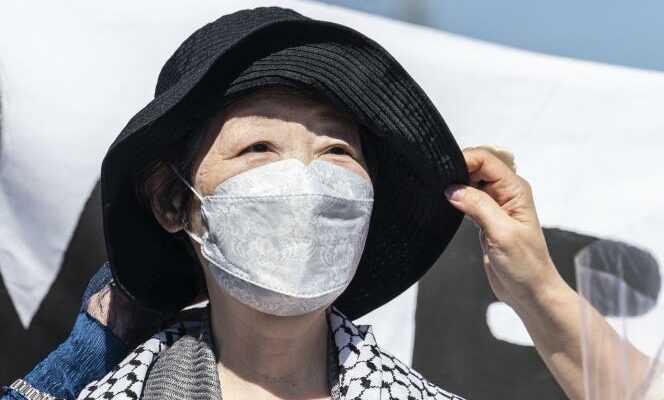With the release on Friday, May 28, of Fusako Shigenobu, who was the face of the Japanese Red Army (nihon sekigun), a terrorist group that committed a series of deadly attacks around the world in the 1970s and 1980s, turns a page in the history of “years of lead” .
It is an elderly woman (76 years old), her face hidden by a mask, wearing a large black hat and a bouquet of flowers in her hands who left the Hachioji medical penitentiary center in Tokyo with her daughter. Thirty former activists were present as well as a hundred journalists. “Our half-century-old struggle has caused innocent people to suffer and for that I sincerely apologize,” she said.
Until her arrest in Osaka in November 2000, Fusako Shigenobu had been the most wanted terrorist by Interpol, holed up somewhere in the Bekaa Valley in Lebanon. Sentenced to twenty years of criminal imprisonment in February 2006, the one that the Japanese press baptized the “Queen of the Red Army” was the emblematic figure of the “funeral generation”, born on the undertow of the student movement, which threw itself into the armed struggle. A drift also embodied by the Italian Red Brigades and the Band in Baader, in the former West Germany.
“Our hopes have turned into tragedy”
The sunken-cheeked woman with graying hair, a boyish cut, who returned to Japan in 2000 in the hope of reviving the movement in the archipelago, was no longer the young student with enigmatic beauty and a face framed by long hair whose photo had appeared for three decades in Japanese police stations and immigration offices.
Fusako Shigenobu, who did not herself participate in the attacks perpetrated by the Red Army, was convicted during her trial for having organized a hostage-taking at the French embassy in The Hague in 1974 – during which three police were seriously injured. While acknowledging that she had not participated directly in this operation, nor in others, the court nevertheless considered that she was the instigator of it as “central figure of the terrorist group”.
At the statement of the judgment, she had raised her fist in the direction of a dozen sexagenarian sympathizers who had taken their place in the courtroom. In a written message, she nevertheless expressed her regrets: “In front of the judges, I felt the eyes of our victims weigh on me like my comrades who fell in the struggle. » In April 2001, she announced the dissolution of the small group. Then, in a written interview withu Japan Times in 2017, she acknowledged: “Our hopes for revolution have not been met and have turned into tragedy. »
You have 45.24% of this article left to read. The following is for subscribers only.
